Meet Doug and Teresa Moore, Recipients of the National Outstanding Tree Farmer of the Year Award
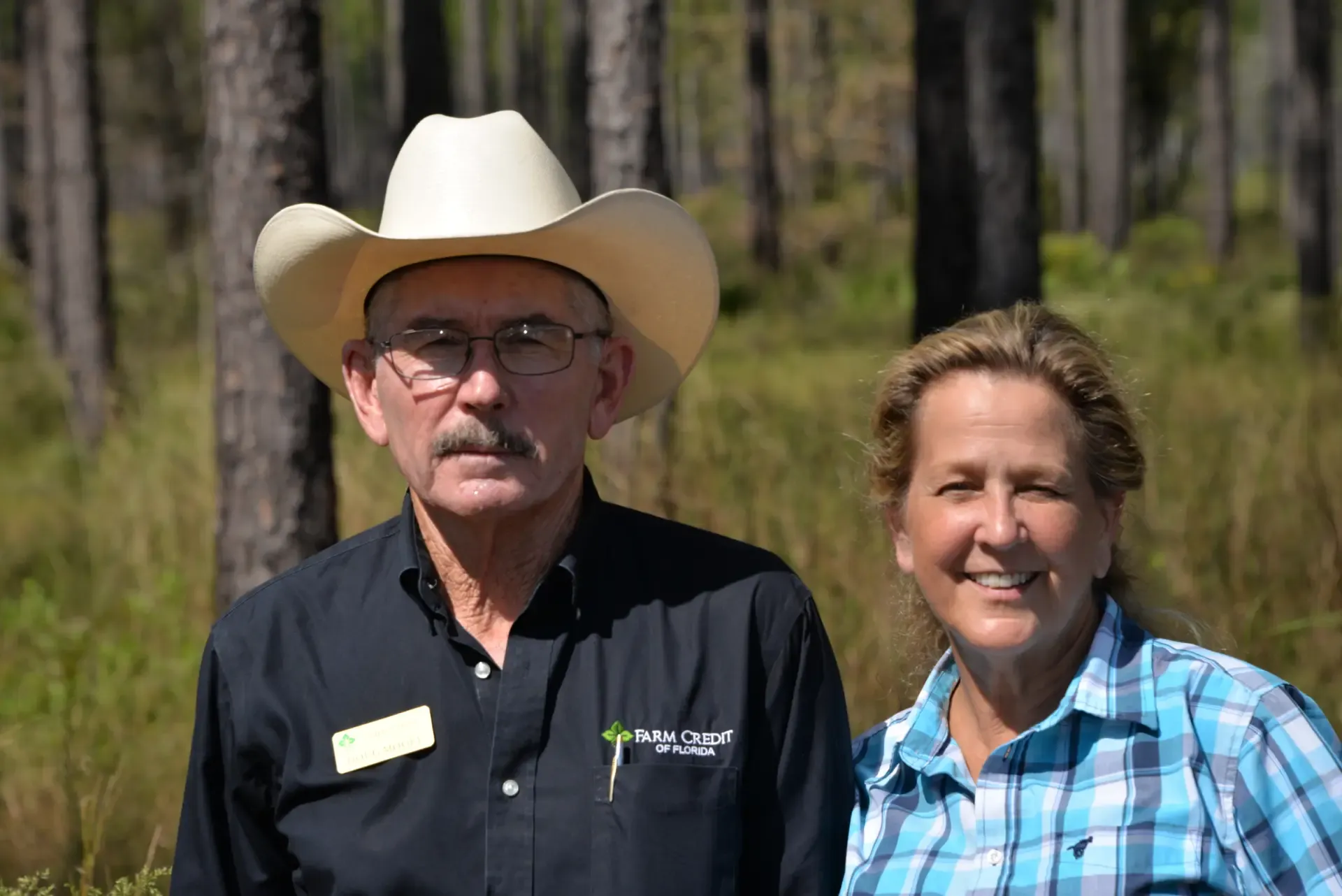
Doug and Teresa Moore on their property in Florida. Photo courtesy of Chris Demers.
One day, a boy who was about 12 years old visited South Prong Plantation in Baker County, Florida, about 50 miles west of Jacksonville, for a hunter safety class. Doug Moore, who owns the 2,400-acre property with his wife, Teresa, noticed how intently the boy engaged with the lessons and how much he appeared to be enjoying the experience. Late in the day, the boy approached Doug.
I always had that passion to own a big piece of timberland.
“Mr. Moore, can I ask you a question?” the boy said. “Do you know you live in paradise?”
Doug remembers the moment with fond appreciation. The boy saw the land the same way Doug does – as a true Eden. Doug grew up in love with the woods, particularly obsessed with hunting and everything it entailed. Even then, he dreamed of a property to call his own.
“I always had that passion to own a big piece of timberland,” Doug said.
As an adult, Doug owned and ran his family’s 2,000-head dairy farm in Jacksonville for more than 30 years. As conditions became more difficult for the business, though, he decided to shift his perspective. In 2002, he and Teresa decided to search for timberland.
They gravitated to a piece of property, now called South Prong Plantation, because of its proximity to their home and other businesses in Jacksonville, and because the timber was young, meaning they could afford to buy more land. The Moores appreciated the diversity of the property which includes a mixture of pine flatwoods, cypress swamps and hydric hammocks, along with a creek and old homesteads. In particular, the Moores recognized the conservation value offered by a 400-acre hardwood swamp that serves as the headwaters of the south prong of the St. Marys River, the feature that gives the property its name.
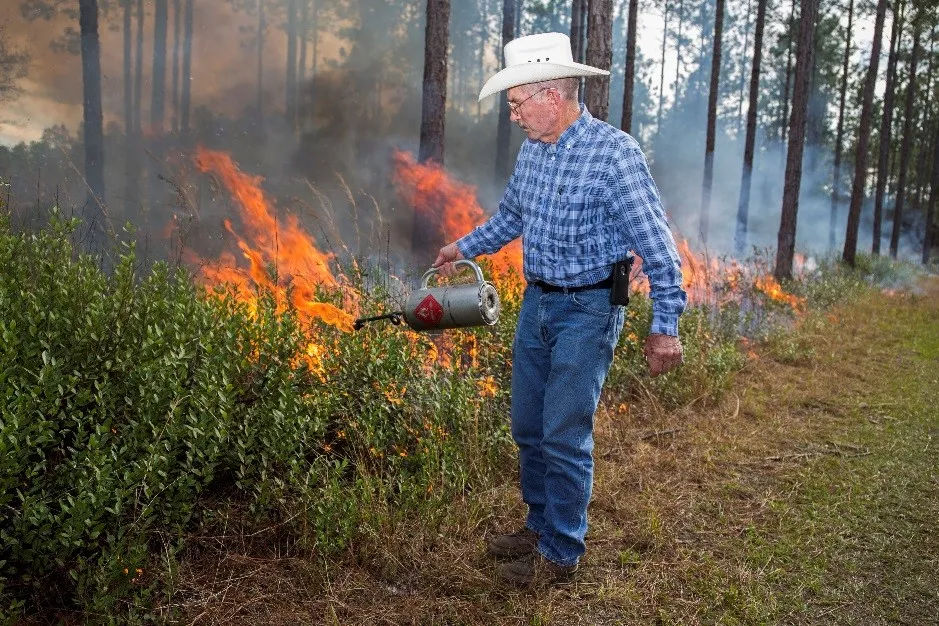
Prescribed burning is one of the main methods the Moores use to control understory regeneration in their pine stands. Photo courtesy of Camilla Guillen.
At the time of the purchase, Doug recalls the property was industrial timberland with “nearly no management.” In subsequent years, Doug provided “more and more intensive” management of the land as he learned forestry through practice and hundreds of hours of classes. Doug gained the expertise to not only manage his own land with sustainable timber practices and to gain certification for South Prong as a Tree Farm but to start a business helping others with timber and wildlife management, including managing prescribed burns and planting site-specific pines.
Landowners like Doug and Teresa, who successfully integrate timber and wildlife management on South Prong Plantation, are vitally important to the conservation of Florida’s fauna and flora.
“Over 70% of Florida lands are in private ownership,” said Ginger Feagle, Florida Fish and Wildlife Conservation Commission, Regional Coordinator, Landowner Assistance Program. “Landowners like Doug and Teresa, who successfully integrate timber and wildlife management on South Prong Plantation, are vitally important to the conservation of Florida’s fauna and flora.”
Feagle said the FWC Landowner Assistance Program appreciates the impact Doug and Teresa have had on the forestry community through their efforts to educate others about land stewardship and outdoor recreation.
“They are a great partner and are always willing to share their experience,” she said.
The groups that visit South Prong Plantation represent a wide range of interests, encompassing “everyone from the hunters to the tree huggers,” Doug said. Doug revels in every opportunity to promote outdoor recreation to a wide audience and help others appreciate the importance of the forest products industry. Doug particularly enjoys helping new hunters, especially youth and women, find their footing and guides them on successful hunts each year. In fact, he said over 65 hunters have harvested their first deer at South Prong Plantation.
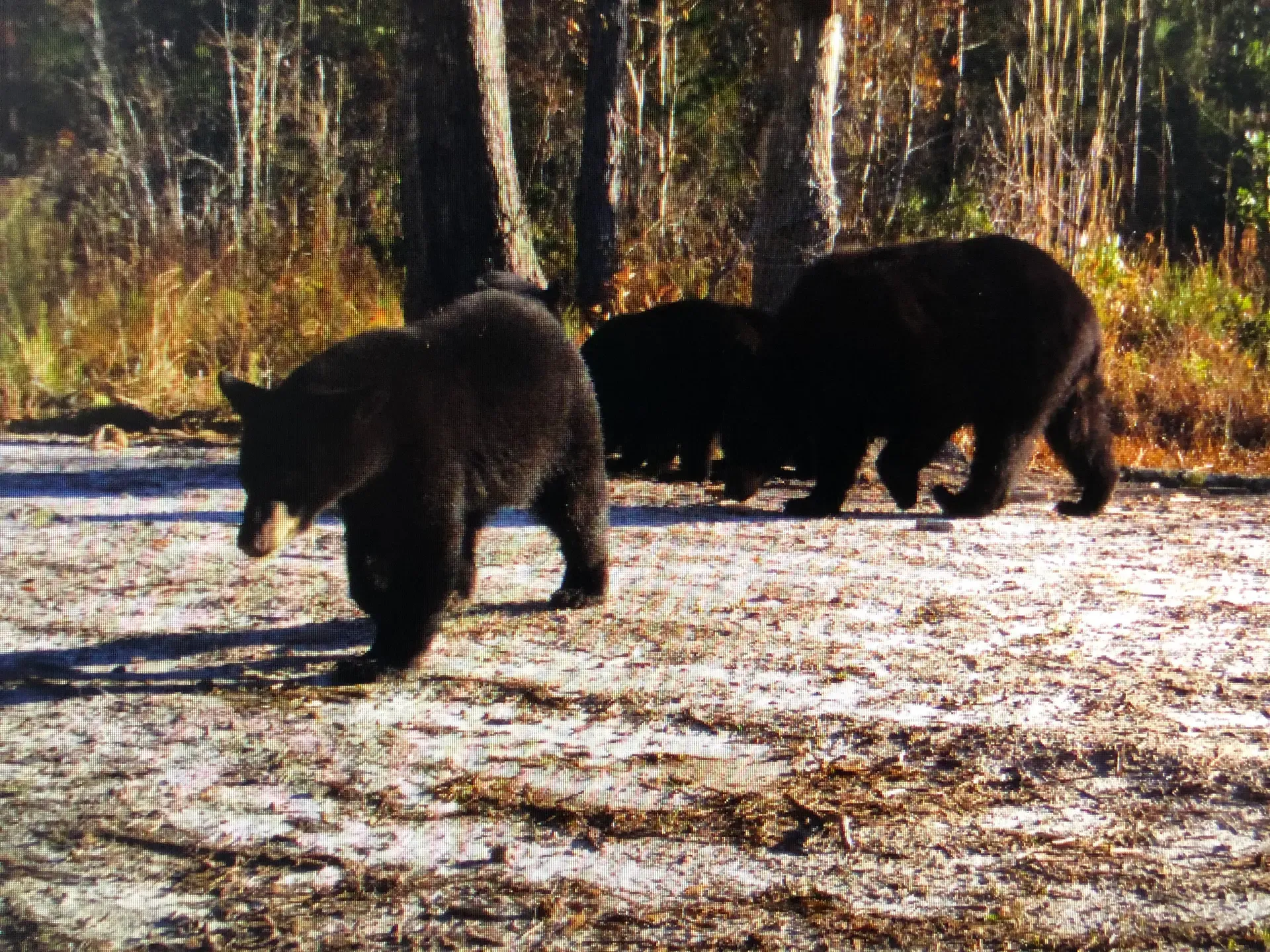
Black bears are one of many species that thrive on the South Prong Plantation. Photo courtesy of Doug Moore.
In addition to hunters, the Moores host such groups as the University of Florida /IFAS Extension, the Florida Fish and Wildlife Conservation Commission, the Boy Scouts and local native plant societies (“we’ve got some endangered orchids on the property,” Doug said), among others. Fellow forest owners frequently join tours to see the Moores’ land and wildlife management practices in action and to speak to Doug about his strategies managing timber harvests with a smaller-acreage mosaic pattern to create more edge and cover for wildlife, along with using prescribed fire to both reduce hardwood competition and improve native groundcover. Doug extends an open invitation to all landowners who want to learn from his management.
“Whether it’s a forester or whether it’s somebody who is just interested in us and hardly ever makes it into the woods, we cover it all,” Doug said.
The Moores are developing a conservation easement on the property to ensure that it will remain undeveloped, continue sustainable forestry, and be available to others for future education programs. During the week, Doug resides at South Prong to oversee its daily management while Teresa stays in Jacksonville to run a stainless-steel fabrication company. They look forward to their weekends together at South Prong, embracing the property and its possibilities.
I’ve got 2,400 acres that I love, and I get to be here whenever I want. I know how lucky I am to live in paradise.
South Prong Plantation has proved to be the kind of place Doug dreamed of owning as a teenager spending time in the woods.
“I’ve got 2,400 acres that I love, and I get to be here whenever I want,” he said. “I know how lucky I am to live in paradise.”
Doug and Teresa Moore are the recipients of the American Tree Farm System's® 2022 National Outstanding Tree Farmer of the Year Award. An expanded version of this story, written by Thomas Gresham, will be published in the spring issue of Woodland Magazine, the quarterly publication of the American Forest Foundation.
Related Articles
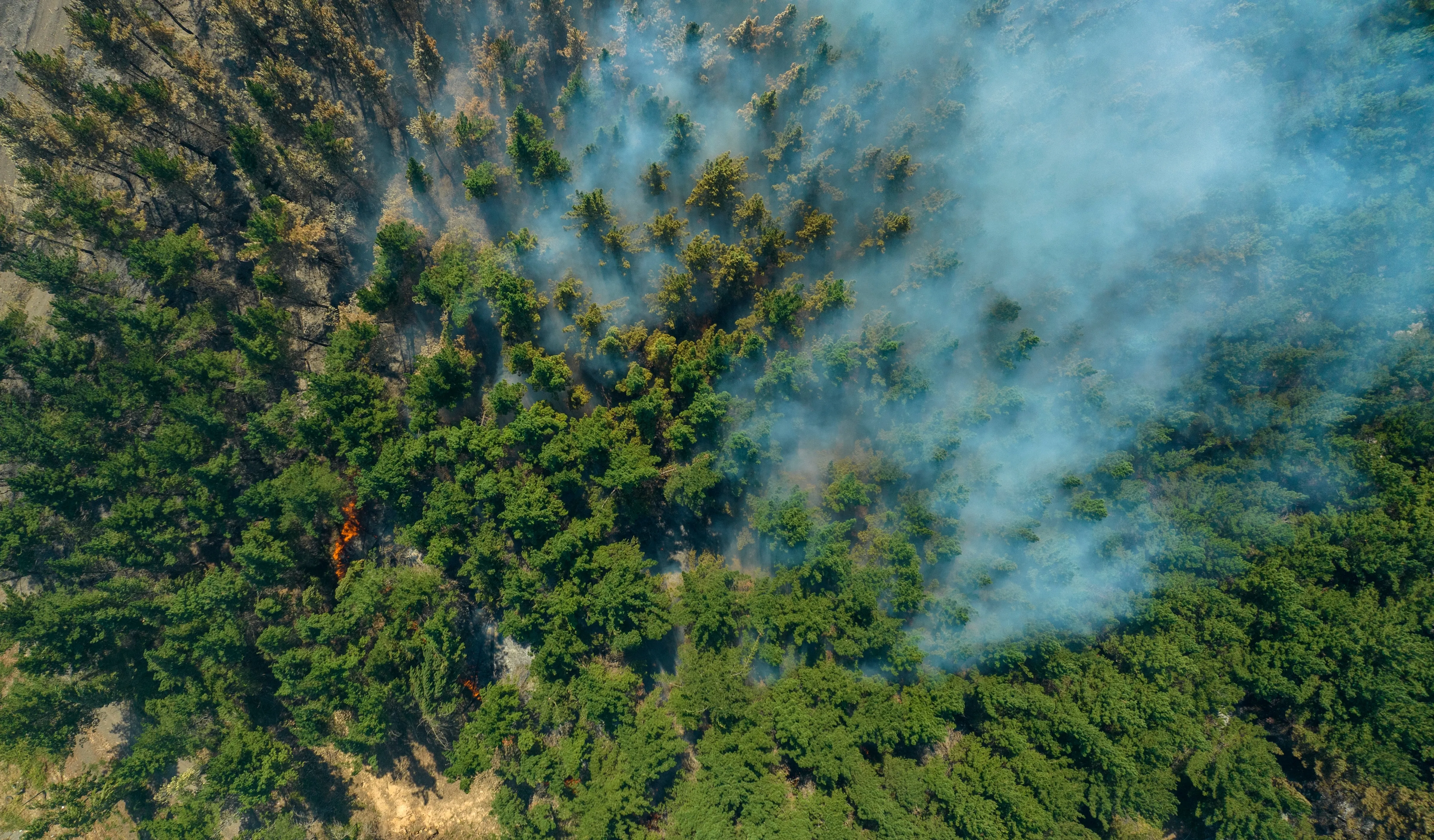
December 1, 2025
Tackling Wildfire Through Partnership: AFF’s Stacked Benefits Model
A few miles outside Grass Valley, California, a narrow road winds past homes tucked into dense forest. From the ground, it is easy to forget that these trees are doing something extraordinary. They are standing between the community and the next wildfire.
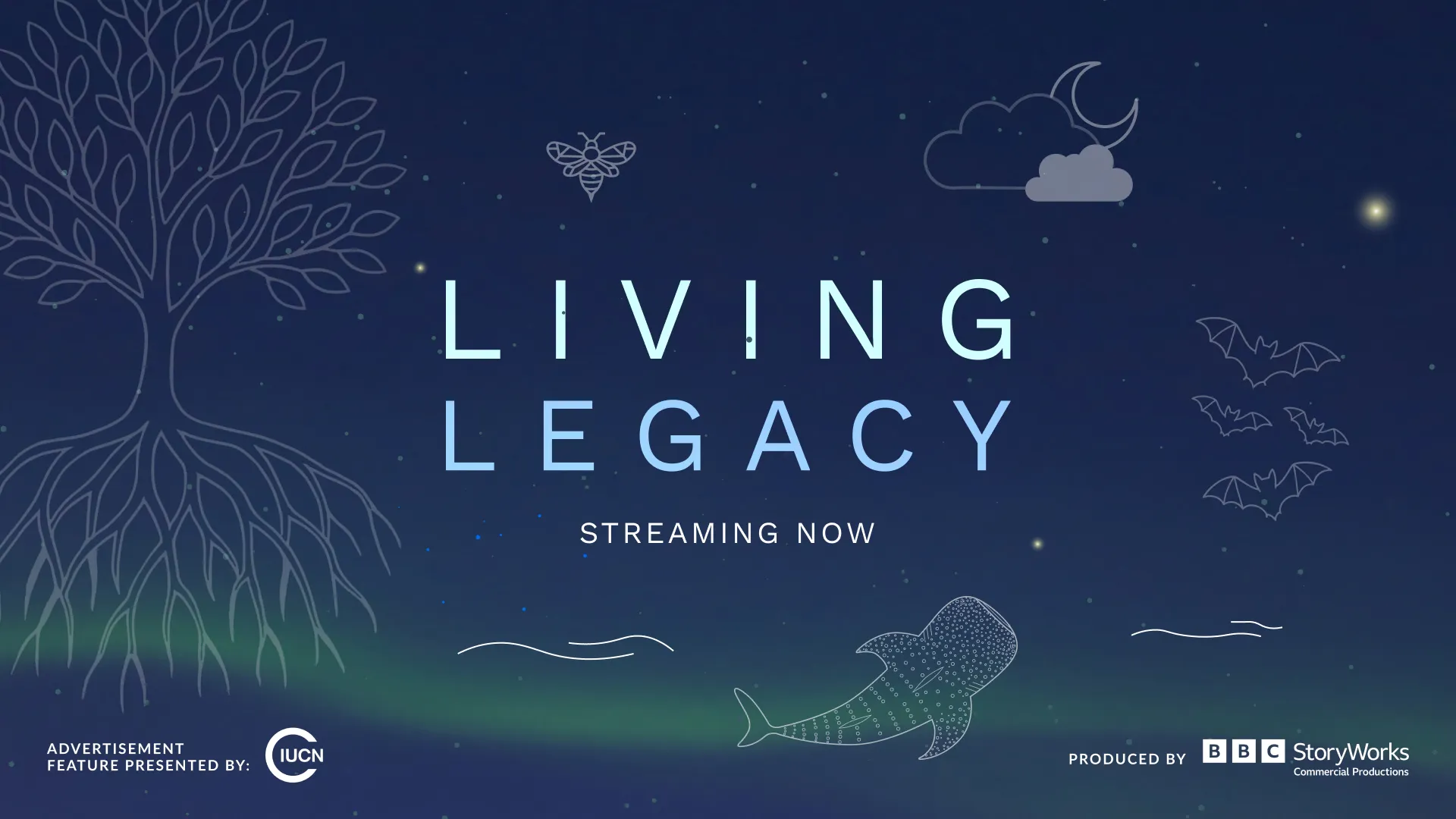
November 20, 2025
New Film Showcases Carbon Project’s Impact on Family Landowners and Nature
The American Forest Foundation (AFF), a national organization committed to empowering family forest owners to create meaningful conservation impact, announced today the release of a new film that tells the story of the Family Forest Carbon Program (FFCP) and its impact on people and the planet.
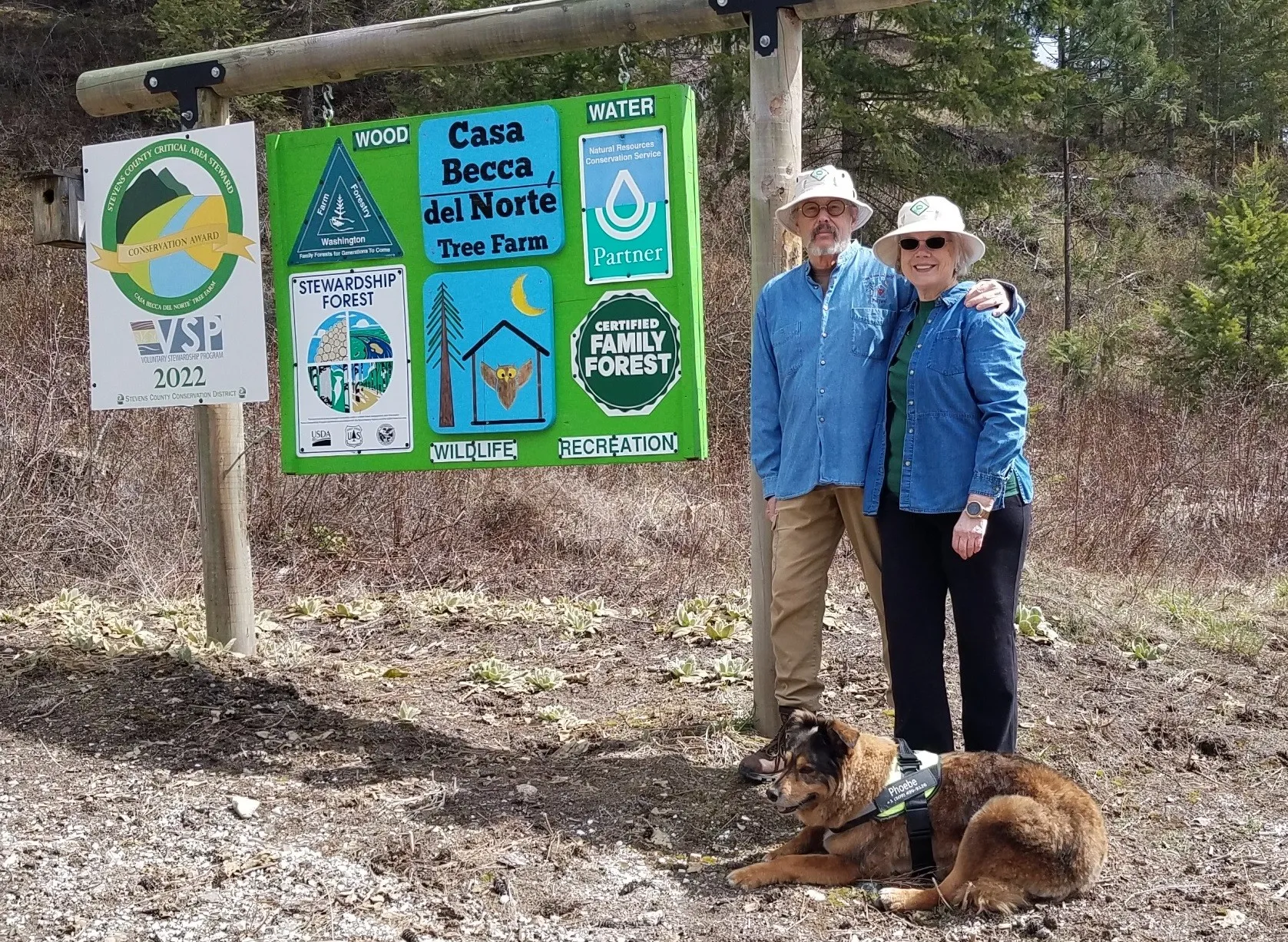
November 6, 2025
Meet the 2025 Outstanding Tree Farmers of the Western Region – Lynn and Becky Miner
Lynn and Becky Miner’s story is one of vision, perseverance, and transformation. When they first purchased their 100-acre property near Chewelah, Washington in 1992, it was far from the thriving, diverse forest it is today. They have poured their energy into turning “Casa Becca del Norte” (Becky’s House in the North) into a model Tree Farm, earning the recognition as 2025’s Outstanding Tree Farmers of the western region.